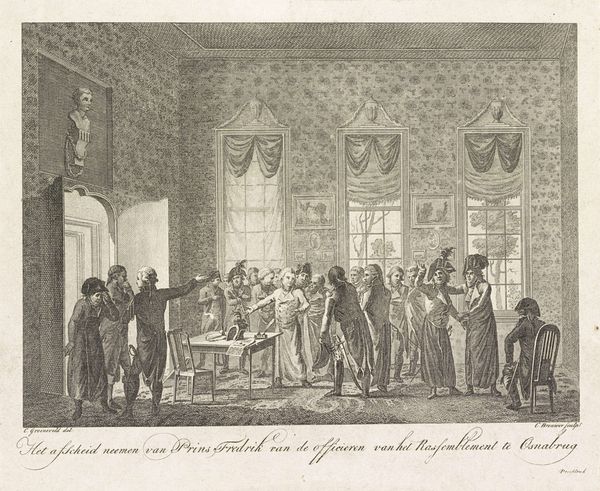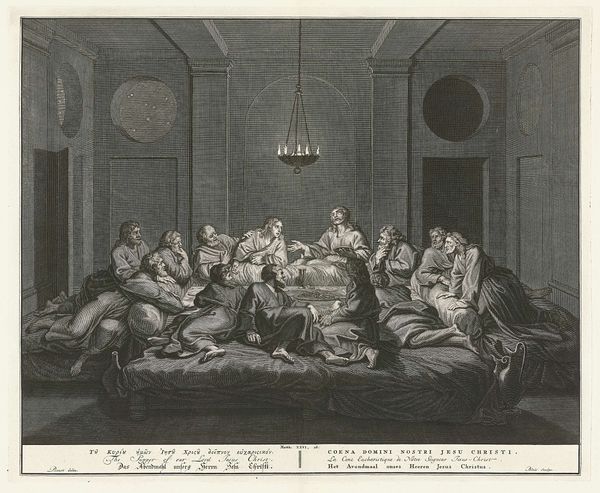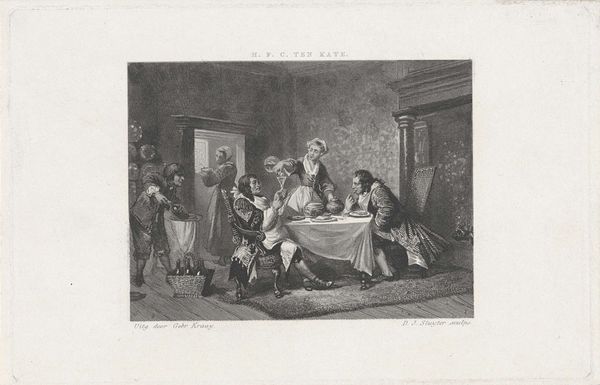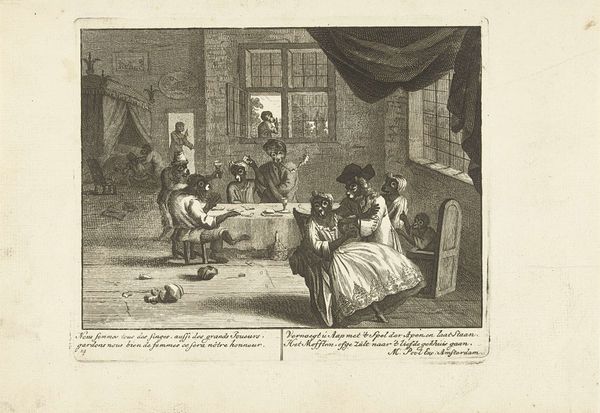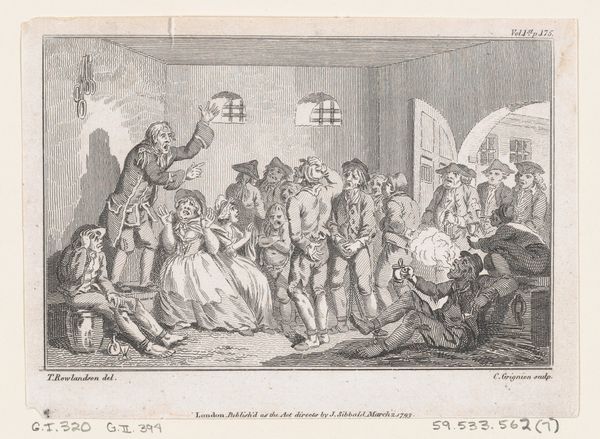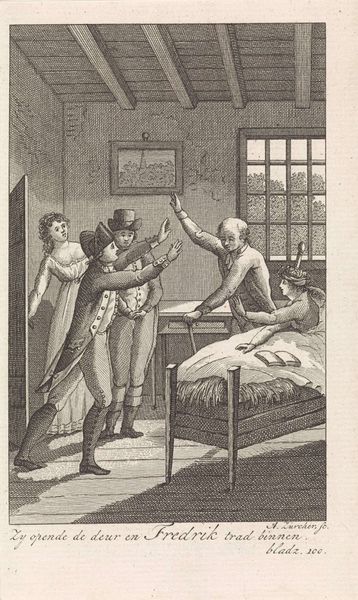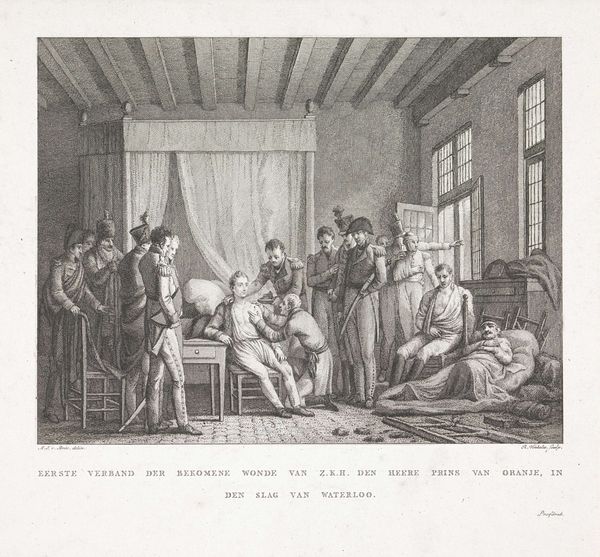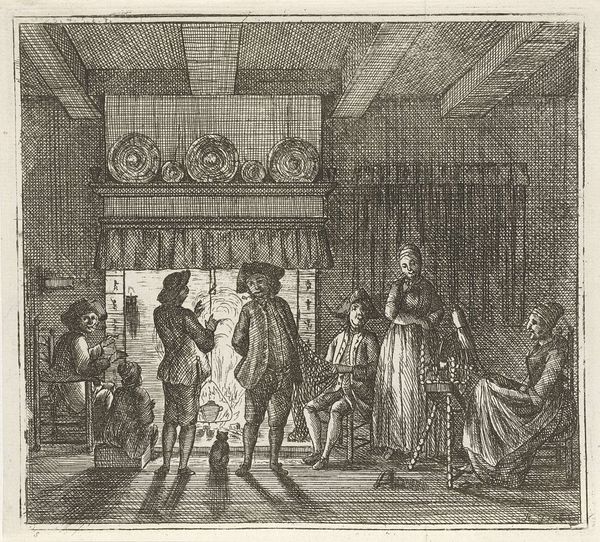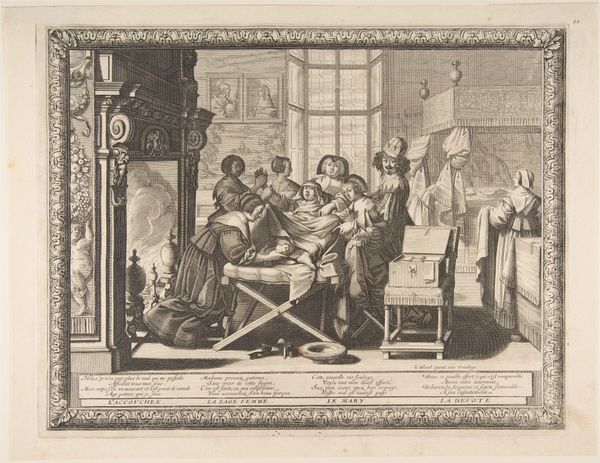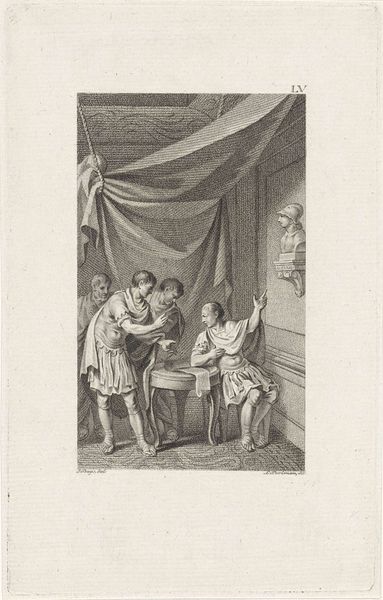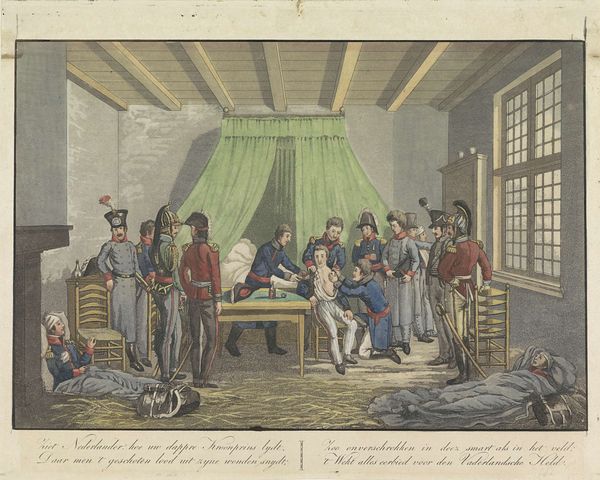
Prins van Oranje na zijn verwonding onder medische behandeling in het veldhospitaal, 1815 1815 - 1817
0:00
0:00
print, engraving
#
narrative-art
# print
#
old engraving style
#
historical photography
#
romanticism
#
19th century
#
pencil work
#
history-painting
#
engraving
Dimensions: height 266 mm, width 341 mm
Copyright: Rijks Museum: Open Domain
Curator: My initial impression is this print exudes an atmosphere of controlled chaos and quiet suffering. Editor: Indeed, it does. This engraving, created sometime between 1815 and 1817, is entitled "Prins van Oranje na zijn verwonding onder medische behandeling in het veldhospitaal, 1815" or "Prince of Orange After Being Wounded Under Medical Treatment in the Field Hospital, 1815." The artist is Willem Hendrik Hoogkamer, and it’s currently housed in the Rijksmuseum. Curator: I find the details quite arresting. A figure lies prostrate on a bed of straw, seemingly forgotten as attention shifts to the central figure being attended to by what seems like a doctor. The lighting heightens the dramatic intensity. Editor: Absolutely, the scene reflects Romanticism’s fascination with heightened emotion and historical narrative. It presents a very particular vision of the wounded prince—vulnerable yet still commanding respect—within the theater of war, albeit a contained one. Curator: The way the prince sits there, half-dressed, amidst these concerned onlookers… I can almost feel his discomfort. Editor: It's a constructed moment of heroic resilience. It presents royalty facing adversity but also benefiting from the attentive service of the medical personnel in the camp. These images helped solidify national narratives, focusing on sacrifice and patriotic unity at a pivotal moment in history. Curator: The artist manages to evoke sympathy and admiration. The expressions on the faces around him reveal not just concern, but a reverence. Editor: Exactly, such prints weren’t simply documentation; they actively shaped public sentiment. They visually reinforce the image of the prince as a leader worthy of sacrifice, his wounds symbols of the nation's struggle and eventual triumph. Curator: Reflecting upon the imagery, one can understand why narrative art gained prominence. Editor: Certainly, they were a vital tool for projecting political agendas through emotional and relatable stories. Art became integral to creating and sustaining national identities during this period. Curator: I'm struck again by the intimate yet staged nature of the scene. It's as if we're given privileged access to witness a very private moment, one charged with profound emotional and political significance. Editor: A perfect embodiment of the period's sensibilities, capturing the nuances of history and their enduring appeal.
Comments
No comments
Be the first to comment and join the conversation on the ultimate creative platform.
